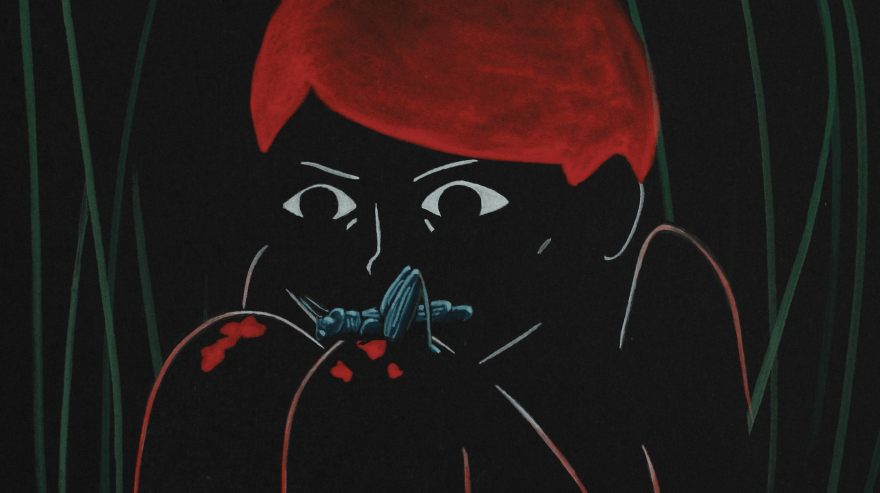Tea time with L’heure de l’ours [And Then the Bear]
Interview with Agnès Patron, director of L’heure de l’ours [And Then the Bear]
L’heure de l’ours is a wonderful animated short film on childhood, smoothly told and built around the figure of a bear. What is bear a metaphor for?
The image of the bear is ambivalent: it’s strong and protecting as well as savage and violent. I initially made pencil drawings representing a child accompanied by a bear. Then came the image of the mother. And finally the cowboy and the houses on fire. The bear projected a sense of both the strength and gentleness that the child in the film is lacking. The child doesn’t have the means to defend himself from the violence the adults inflict on him, he has to cut ties with his mother and rebel against the man who took her away from him. The bear becomes a refuge, a shield, but also an imposing force of opposition.
The film dives into a child’s inner world, but far from an idealized vision of it. The sentiments are violent and savage. Was it important for you to give a different vision of childhood?
My little boy was born five years ago, when the project was beginning to take shape and when Johanna Krawczyk and I were beginning to write the script. The story grew up with him: it developed out of his anger, which strangely resonated with my own. In fact, I myself have not completely left behind the fascinating, cruel world of childhood which is less ideal than we so often try to tell ourselves. So yes, it was important for me to rise up to a child’s level and try my best to evoke the whirlwind of contradictory emotions that inhabit the film’s tiny protagonist.
Which films did you draw from?
I like many different things, in literature, painting, film. For this film, I didn’t really have precise images in mind but I tried to tap into Inuit art for the figure of the bear, which I wanted to be more massive than a realistic brown bear. I also watched a good number of films dealing with childhood. Claire Simon’s documentary Récréations made a big impression on me when I first saw it. For the animation and editing, I like to re-watch the films of Igor Kovalyov and Atsushi Wada.
Can you say a little bit about the animation technique you used?
To begin with, we animated the characters’ movements and the scenery one image at a time with classic animation programs (TV Paint and Flash), then we video-projected the animations on black paper in order to paint them with watercolors. Finally, we took pictures of each of the painted images with a rostrum camera. The filming took place in the Centre region (at Ciclic) and in the PACA region.
Have you discovered any advantages that the short film form offers?
Many. First off, the format is singularly well-suited to animation. And then I also have the feeling that there’s more space for experimentation in short films since financial pressures are less of a concern than with television series and feature films. I was also lucky enough to be surrounded by people who trusted me (the crew at Sacrebleu and Arte in particular) and didn’t question my directorial choices even when they deviated from the original plans.
L’heure de l’ours [And Then the Bear] is part of National Competition F1.








